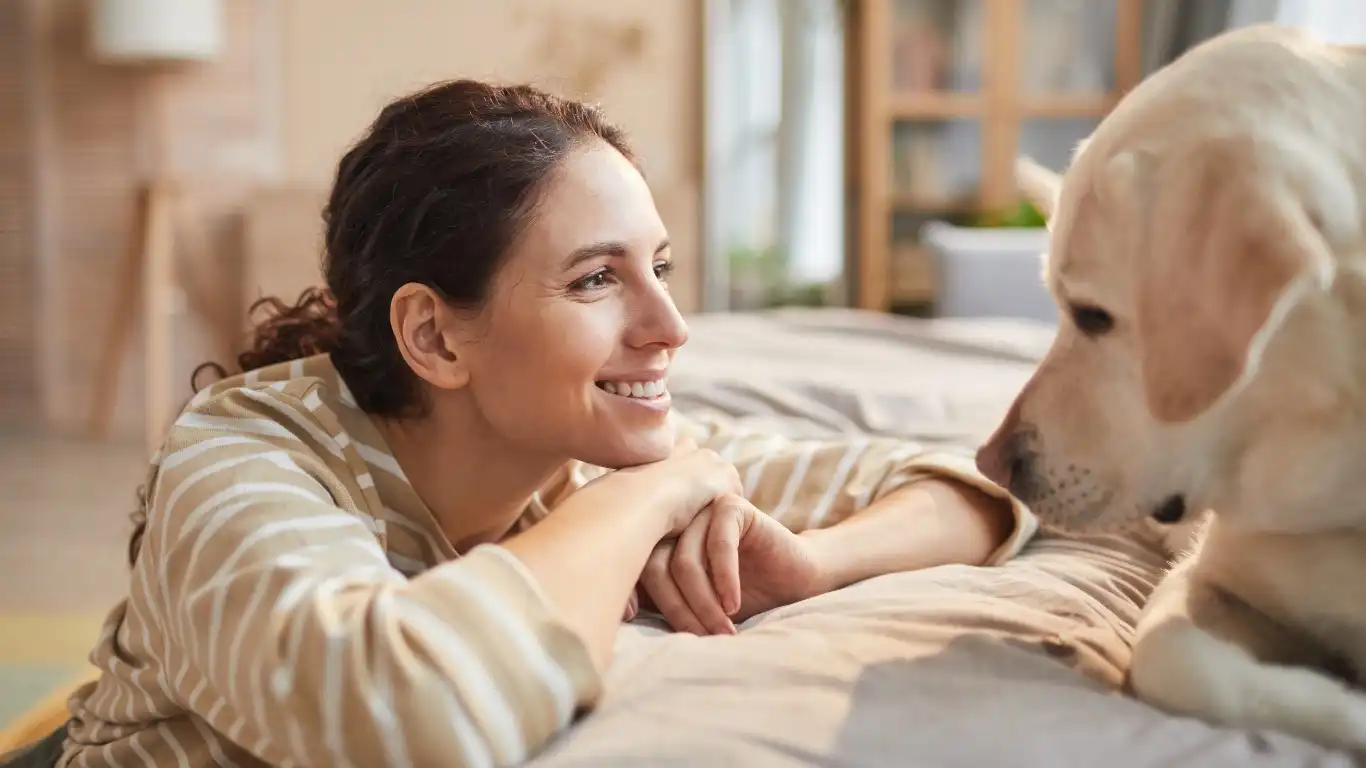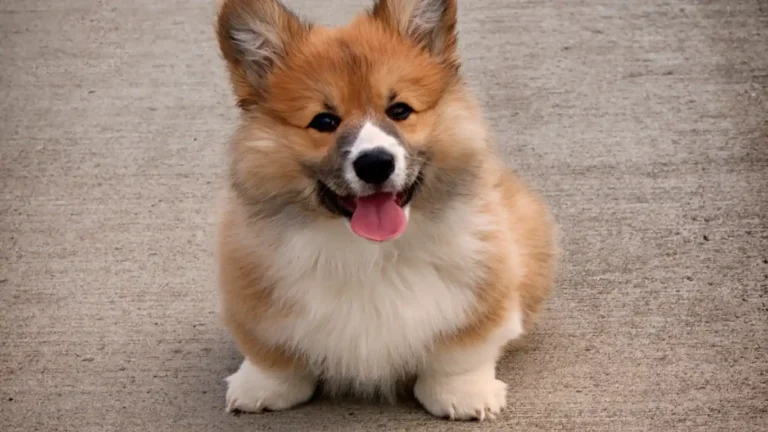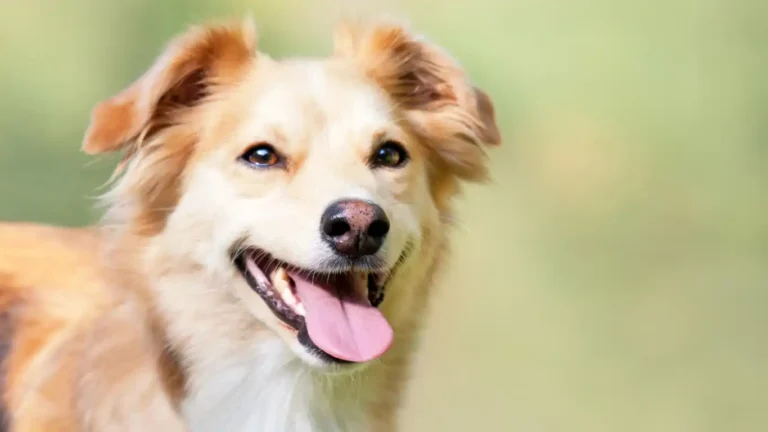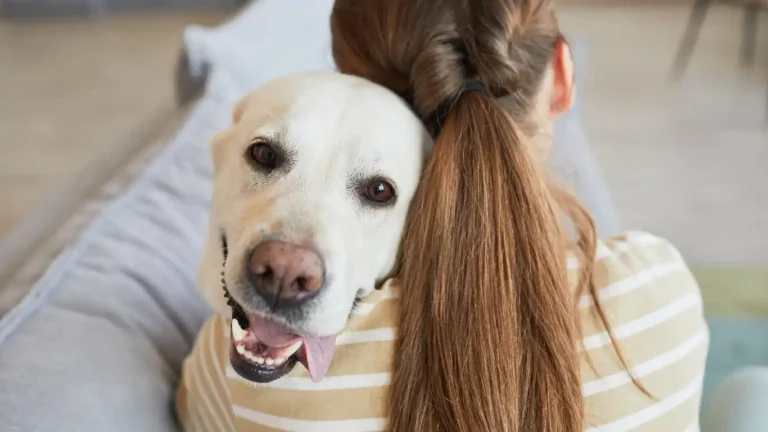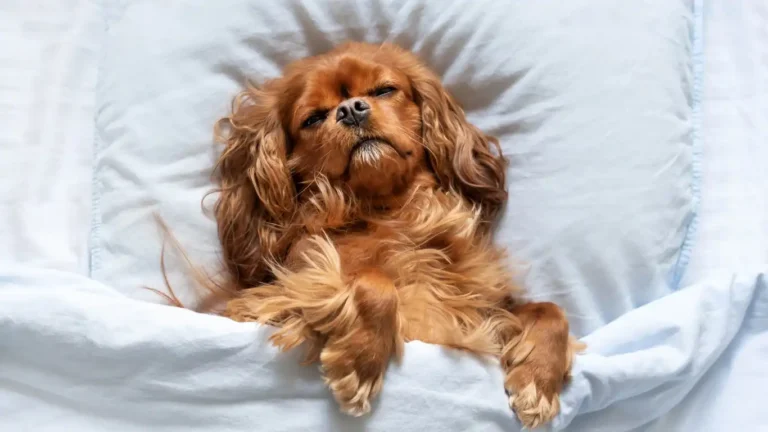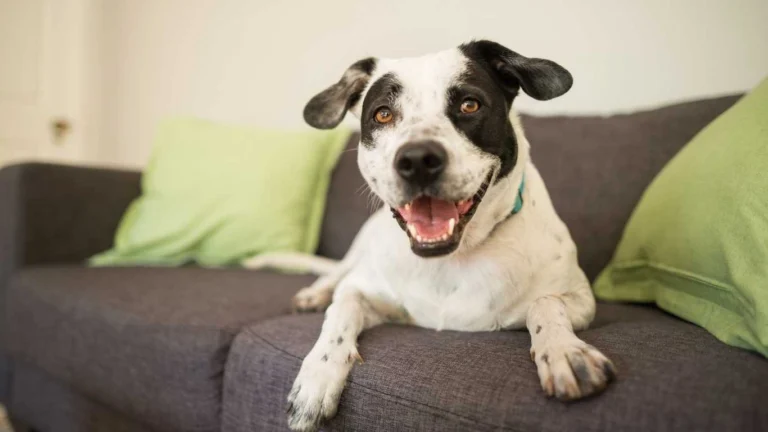Best Puppy Care Tips for First-Time Owners: Avoid These Common Mistakes!
Bringing home a new puppy for the first time? Oh, I totally get it—the mix of excitement and mild panic. Puppies are adorable little chaos machines, and trust me, I’ve been there, watching my first pup turn my home into a landmine of chewed-up shoes and surprise accidents. But don’t worry, you’re in the right place! In this guide, I’ll walk you through the best puppy care tips for first-time owners to make the transition smoother for both you and your furry friend.
Setting Up Your Home for a Puppy
![]()
Before your puppy even steps into your home, you’ll want to make sure you’re fully prepared. Think of it as baby-proofing, but for a curious, four-legged toddler with sharp teeth.
Puppy-Proofing 101
Puppies explore the world with their mouths, so anything within reach is fair game. Here’s what I learned the hard way (RIP to my favorite pair of sneakers):
- Hide electrical cords or use protective covers.
- Store shoes, remote controls, and other chewable items out of reach.
- Block off areas you don’t want your pup wandering into.
- Use baby gates to create a safe zone.
- Keep toxic foods and household cleaners locked away.
Must-Have Puppy Supplies
There’s nothing worse than realizing at midnight that you forgot to buy puppy food. Save yourself the stress by grabbing these essentials in advance:
- Quality puppy food: Look for something with high protein and essential nutrients.
- Food and water bowls: Stainless steel or ceramic is best—no cheap plastics!
- A comfy bed: Even if they’ll probably ignore it and sleep on your lap.
- Crate and playpen: Helps with training and gives your pup a safe space.
- Toys: Chew toys, plushies, and interactive toys for mental stimulation.
- Leash and collar: Make sure they fit comfortably, with an ID tag attached.
Introducing Your Puppy to Their New Home
![]()
That first day is a big deal—for both of you. Your puppy is in a brand-new world with new smells, sights, and sounds. They might be nervous or overly excited (or a weird mix of both).
Take It Slow
Don’t overwhelm them with too much too soon. When I brought my first puppy home, I made the mistake of inviting all my friends over at once. Big mistake. He hid under the couch for hours.
Instead, try this approach:
- Let them explore their new space at their own pace.
- Show them where their food, water, and sleeping area are.
- Limit introductions to family members first—no big parties yet!
- Keep everything calm and positive.
First Night Tips
Ah, the first night. Expect some whining, and don’t be surprised if you get little to no sleep. Puppies miss their littermates, so being alone can be tough.
Here’s what worked for me:
- Place their crate near your bed so they feel less alone.
- Use a soft blanket or a warm water bottle to mimic the feeling of their litter.
- Try a ticking clock (it mimics a heartbeat and can be super soothing).
- Don’t give in to whining immediately—comfort them, but don’t create bad habits.
Establishing a Routine Early On
![]()
Puppies thrive on routine. The sooner you set one, the better. When my first pup came home, I quickly realized that winging it led to chaos (and lots of accidents on the carpet).
Feeding Schedule
Stick to a consistent meal schedule to keep their digestion on track. Here’s a basic guide:
- Under 3 months: 4 meals a day
- 3-6 months: 3 meals a day
- 6+ months: 2 meals a day
Always provide fresh water, and avoid overfeeding—puppy eyes are convincing, but stick to portion control!
Potty Training Basics
Accidents will happen, but consistency is key. The best strategy? Take them out:
- First thing in the morning
- After eating or drinking
- After playtime
- Before bedtime
Praise them immediately when they go in the right spot—treats and excitement go a long way!
Socialization and Training: Raising a Well-Behaved Puppy
![]()
Now that your pup is settling in, it’s time to focus on training and socialization—two things that will shape their behavior for life. I can’t stress this enough: the earlier you start, the better! Puppies are like little sponges, soaking up every experience. The trick is making sure they absorb the right lessons (and not just the taste of your furniture).
The Importance of Early Socialization
One of the biggest mistakes I made with my first puppy was keeping him too sheltered at the beginning. I thought I was protecting him, but in reality, I was making things harder. Puppies have a critical socialization window (between 3 and 14 weeks), and during this time, they should be exposed to new people, places, sounds, and experiences in a positive way.
Here’s how you can introduce your puppy to the world safely:
- Let them meet new people (including kids, if possible).
- Expose them to common noises like vacuum cleaners, doorbells, and traffic.
- Introduce them to other friendly, vaccinated dogs.
- Take short car rides to get them used to traveling.
- Let them walk on different surfaces (grass, pavement, carpet, tile, etc.).
Just remember—go at their pace! If they seem scared, don’t force it. Offer treats and encouragement to build positive associations.
Basic Commands Every Puppy Should Learn
Teaching your pup a few basic commands early on makes life so much easier. Not only does it help with discipline, but it also strengthens your bond. Here are the top must-know commands:
- Sit: The foundation of all good behavior. Start with a treat in hand, raise it slightly above their head, and say “sit.” Reward them when their butt hits the floor.
- Stay: A lifesaver in many situations. Teach it by having them sit, then take a step back while saying “stay.” Increase the distance over time.
- Come: Super important for safety. Always reward them when they respond to their name and come to you.
- Leave it: This one saved my dog from eating all kinds of questionable things. Start by showing them a treat, saying “leave it,” and rewarding them when they resist.
- Down: Helps with impulse control. Guide them into a lying position using a treat, and say “down.” Reward immediately.
Short, fun training sessions work best—puppies have short attention spans, so keep it light and positive!
Handling Puppy Biting and Chewing
![]()
If there’s one thing that catches first-time puppy owners off guard, it’s the relentless biting phase. Trust me, those tiny teeth feel like needles! But don’t worry—it’s normal. Puppies explore everything with their mouths, and teething makes it worse.
Why Puppies Bite and How to Stop It
Biting isn’t aggression—it’s just how puppies play and learn. Here’s how to handle it:
- When they bite too hard, let out a high-pitched “ouch!” and stop playing. This mimics how their littermates would react.
- Redirect their chewing to an appropriate toy instead of your fingers.
- Encourage gentle play—no roughhousing that encourages biting.
- If they’re overly excited, give them a short timeout to calm down.
Consistency is key. If one family member allows biting and another doesn’t, it sends mixed signals. Set clear rules from day one!
Chew Toys and Teething Relief
Since puppies will chew on something, make sure it’s not your furniture or shoes. Invest in good chew toys:
- Rubber toys like Kongs (bonus: stuff them with treats or peanut butter).
- Rope toys for supervised play.
- Frozen washcloths or teething rings to soothe sore gums.
- Edible chew sticks (always choose puppy-safe options).
Switching up their toys keeps them interested and prevents destructive chewing habits.
Health and Vet Care: Keeping Your Puppy Happy and Healthy
![]()
One of the first things you’ll need to do as a new puppy parent is schedule a vet visit. It’s not just about vaccinations—your vet will help ensure your pup is growing properly and staying healthy.
Essential Puppy Vaccinations
Vaccinations protect your pup from dangerous diseases. Your vet will guide you, but here’s a general schedule:
- 6-8 weeks: First round of distemper, parvovirus, and hepatitis vaccines.
- 10-12 weeks: Second round of vaccines + optional Bordetella (for kennel cough).
- 14-16 weeks: Final puppy shots + rabies vaccine.
Until they’re fully vaccinated, avoid high-traffic dog areas (like dog parks) to keep them safe.
Parasite Prevention
Fleas, ticks, and worms—oh my! Puppies are extra vulnerable to these nasty parasites. Here’s what you need to know:
- Flea & tick prevention: Your vet may recommend monthly treatments.
- Heartworm prevention: Starts around 8 weeks old and continues for life.
- Regular deworming: Puppies should be dewormed at 2, 4, 6, and 8 weeks old.
It might seem like a lot, but keeping up with these treatments prevents serious health issues down the road.
Recognizing Signs of Illness
Puppies can’t tell you when they’re feeling sick, so watch for these warning signs:
- Loss of appetite or refusal to eat.
- Lethargy or extreme sleepiness.
- Vomiting or diarrhea.
- Excessive scratching or hair loss.
- Persistent coughing or wheezing.
If anything seems off, call your vet—it’s always better to be safe than sorry.
Grooming and Hygiene: Keeping Your Puppy Fresh and Clean
![]()
Let’s talk puppy hygiene! Keeping your pup clean isn’t just about making them look adorable (though that’s a nice bonus). Regular grooming helps prevent health issues and keeps your home from smelling like wet dog 24/7.
Bathing: How Often Is Too Often?
One of the biggest mistakes first-time owners make is overbathing their puppies. I totally get it—you want that fresh puppy smell to last forever. But too many baths strip their natural oils and dry out their skin.
As a general rule:
- Once a month: For most puppies, this is plenty.
- More often: If they roll in mud, get into something stinky, or have a skin condition.
- Less often: If they have a naturally oily coat (like Labradors) or sensitive skin.
Always use a puppy-safe shampoo. Human shampoos are too harsh and can mess with their pH levels.
Brushing: The Secret to a Healthy Coat
Brushing isn’t just about keeping your pup looking good—it helps with shedding, prevents mats, and distributes their natural oils.
Here’s what to keep in mind:
- Short-haired breeds: Brush once or twice a week with a soft-bristle brush.
- Medium to long-haired breeds: Daily brushing to prevent tangles.
- Double-coated breeds: Use an undercoat rake during shedding season.
If your pup thinks the brush is a chew toy, turn it into a fun bonding experience—treats and belly rubs work wonders!
Teeth, Nails, and Ears—Don’t Skip These!
Grooming goes beyond baths and brushing. Here’s what else to stay on top of:
- Teeth brushing: Aim for daily (but at least a few times a week). Use dog-friendly toothpaste—human toothpaste is toxic!
- Nail trimming: Every 3-4 weeks. If you hear clicking on the floor, it’s time for a trim.
- Ear cleaning: Check weekly for redness or bad odors. Clean with a vet-approved ear cleaner if needed.
Trust me, keeping up with these small tasks will save you from bigger health issues down the road.
Exercise and Playtime: Keeping Your Puppy Active
![]()
A tired puppy is a happy puppy! Exercise is crucial for their physical and mental well-being. But the amount they need depends on their age and breed.
How Much Exercise Does a Puppy Need?
Puppies have bursts of energy followed by long naps (they’re basically toddlers with fur). Over-exercising can harm their growing joints, so follow the “5-minute rule”:
- 5 minutes per month of age (twice a day).
- Example: A 3-month-old puppy needs around 15 minutes of exercise twice a day.
Here are some fun ways to keep your pup moving:
- Short, gentle walks.
- Fetch (on soft ground to avoid joint strain).
- Puzzle toys to stimulate their brain.
- Basic obedience training (yes, learning commands is mentally exhausting!).
And remember—puppy zoomies are 100% normal. Just let them run it out!
Safe Playtime Tips
Playtime is essential, but safety comes first:
- Use puppy-safe toys (avoid anything too small that could be swallowed).
- Supervise interactions with bigger dogs.
- Rotate toys to keep things exciting.
- Don’t encourage rough play that could lead to bad habits.
With the right mix of exercise and play, your pup will grow up happy, healthy, and well-adjusted.
Final Thoughts: Enjoy the Puppy Journey!
Raising a puppy is a wild, exhausting, heartwarming ride. Some days will test your patience (hello, 3 AM potty breaks and chewed-up shoes), but the unconditional love they bring makes every challenge worth it.
The key to success? Consistency, patience, and lots of love. Stick to a routine, be gentle but firm with training, and soak up every puppy snuggle—you’ll blink, and they’ll be all grown up.
Helpful Resources
For more expert-backed puppy care tips, check out these trusted sources:
Disclaimer
This article is for informational purposes only and should not replace professional veterinary advice. Always consult your veterinarian for personalized guidance on your puppy’s health and well-being.
